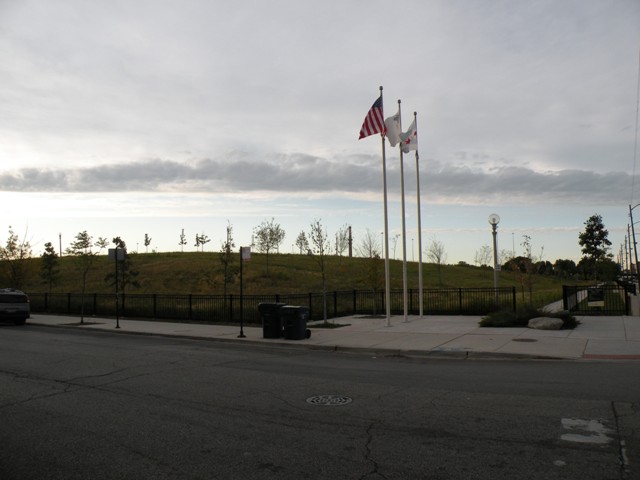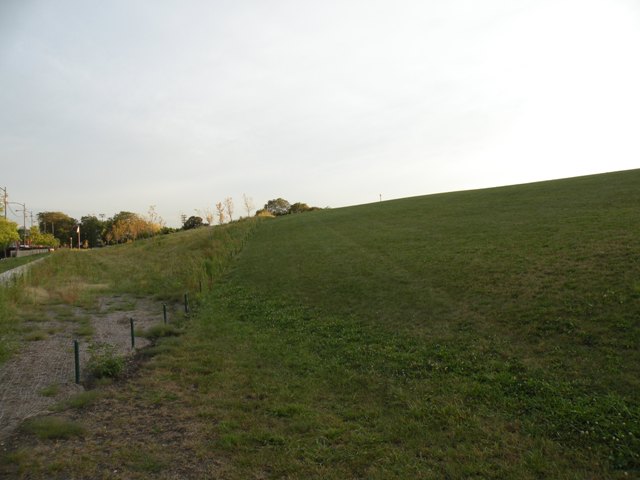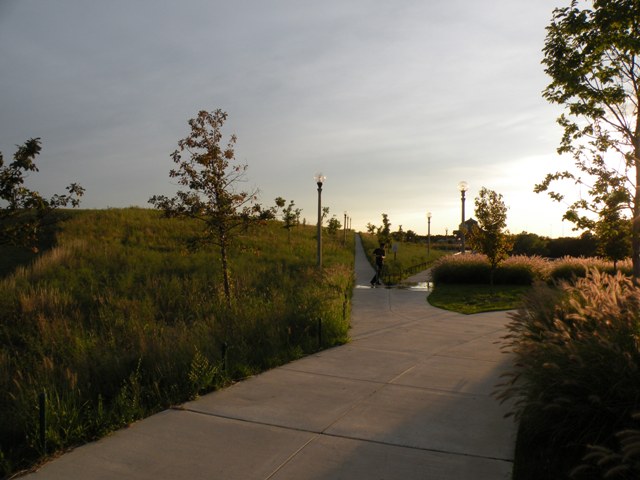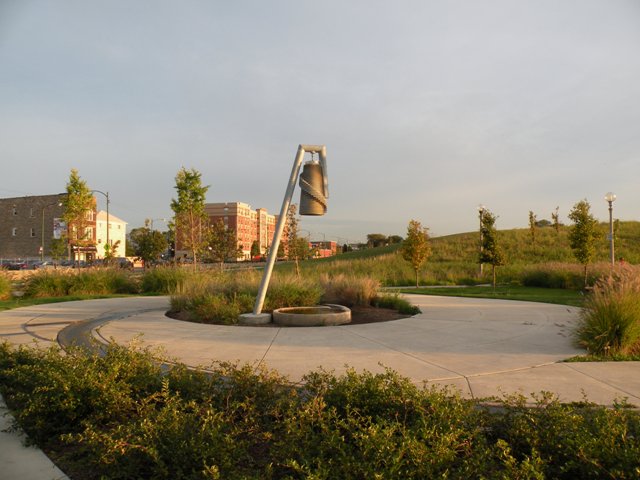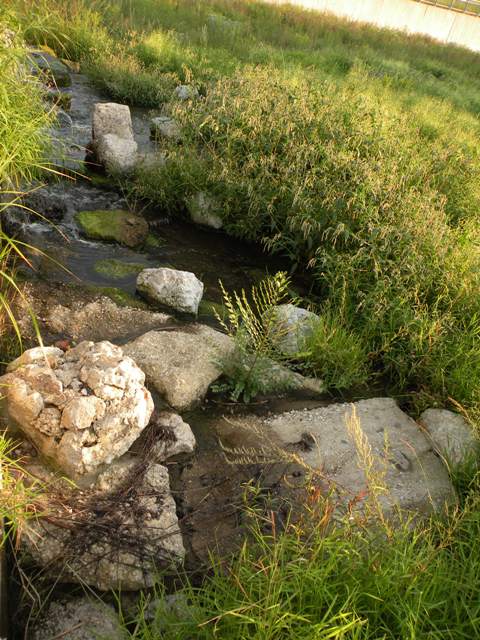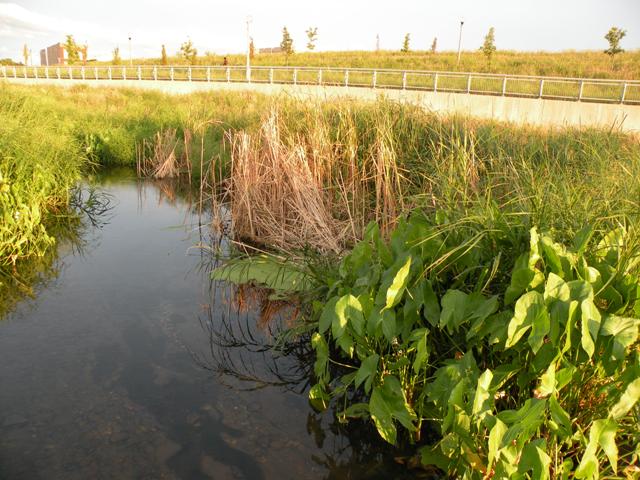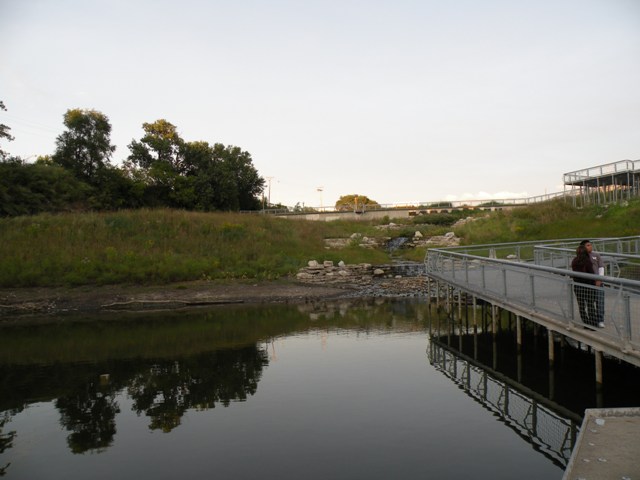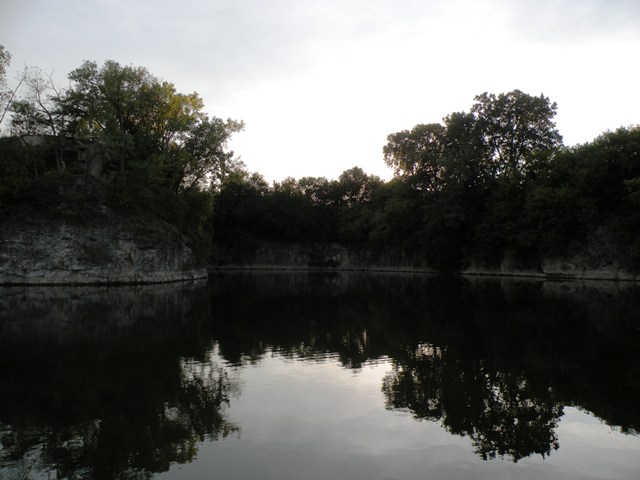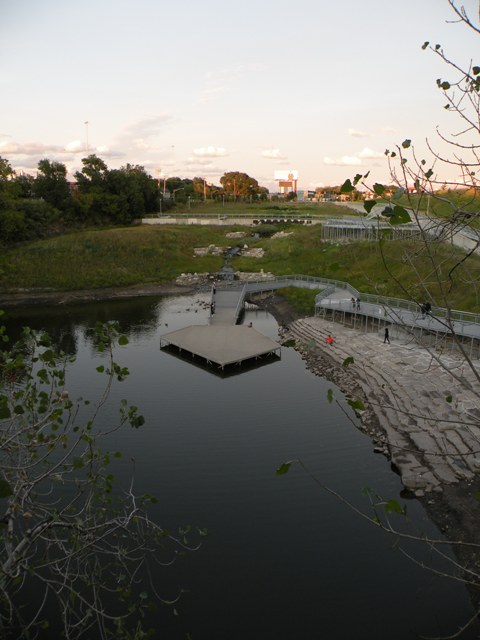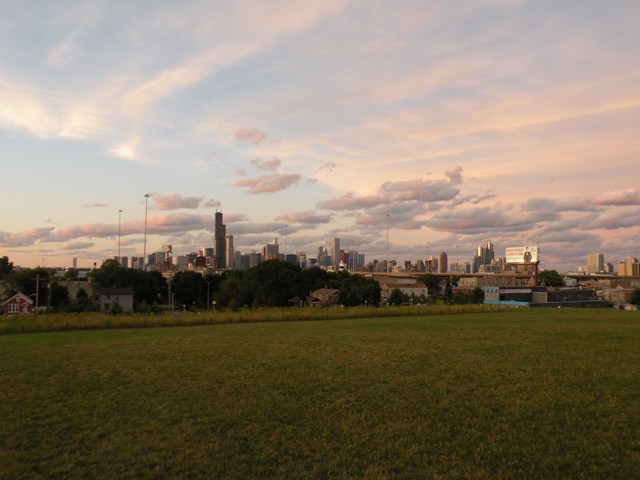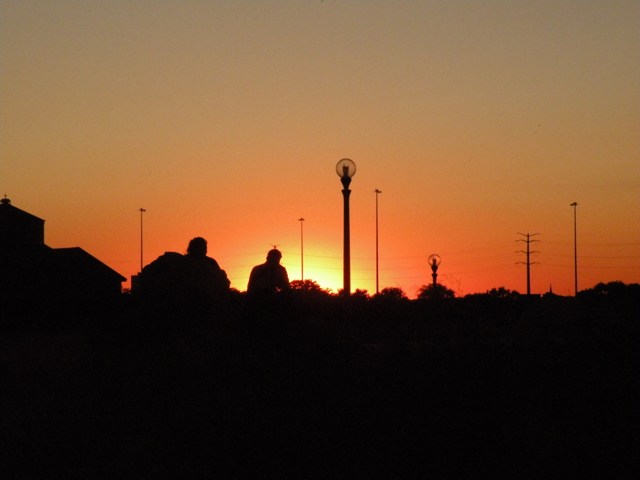Unusual Chicago: "Mount Bridgeport"
By Chuck Sudo in News on Sep 19, 2011 4:00PM
Located literally around the corner from the apartment building I've called home for most of my time in Bridgeport is 27 acres of some of the most tranquil land in the city. Its verdant nature looks out of place in one of Chicago's oldest neighborhoods but its history goes back almost to the city's early days. We and everyone else we know in the neighborhood calls the park "Mount Bridgeport." We'll start there.
Henry C. Palmisano Park originally was a limestone quarry opened in 1836 by the Illinois Stone and Lime Company. A few years later one of the partners in the company, Marcus Cicero Stearns, took over operations and named the rapidly growing hole in the ground his company was digging after himself. Stearns quarry provided much of the stone for downtown and the nearby Illinois and Michigan Canal. Stearns died in 1890 but the quarry continued to operate for another 80 years. By then enough limestone had been excavated that, at its lowest point, the hole reached 380 feet below street level.
After 1970, Stearns Quarry was used as a dumping ground for clean construction waste - wood, brick and other stone materials and ash. This continued until 1999, when the city decided they should probably make something worthwhile of the giant hole. Proposals were submitted by various city departments and the Chicago Park District's plan to fill the quarry and transform it into a nature park was approved.
According to Claudine Malick, who was a project manager for the plan, Palmisano Park is a "closed landfill" project approved by the Illinois EPA. Because the quarry was used as a landfill, the city retains ownership of the park for a fifteen-year period, at which point it transfers to the Park District.
The City approved the Park District's plan in 2004 and the District selected Site Design Group to enact the plan. The park opened in 2009 as Site 39 (Stearns Quarry) Park and was rededicated last November after Henry Palmisano, a Bridgeport resident and outdoor enthusiast whose family still runs an outdoor shop in the eastern edge of the neighborhood.
Over 40,000 square feet of topsoil was trucked in to cover the debris and be sculpted into what you see in the photos. "Because the Illinois EPA declared the quarry a closed landfill, nothing could be removed," said Malick. At its highest point, the park rises 33 feet above street level, giving visitors a beautiful view of the downtown skyline and surrounding neighborhoods. 1.7 miles of walkway, including catwalks and a quarter-mile running track surrounding a soccer field at the southwest corner of the park, give visitors some incline for exercise.
At the northwest corner of the park the limestone walls serve as a backdrop for a retention pond stocked with goldfish, bluegill, large mouth bass and green sunfish. Fishing in the retention pond is catch and release only.
The pond itself is fed by rain and ground water via an underground piping system isolated from the rest of the neighborhood's storm drain system. The water from the pond is pumped to the northeast corner of the park and cascades back to the retention pond, providing aeration. Vegetation for the cascading system was chosen for its nativity to the area and for their ability to filter out urban pollutants. The deepest area of the retention pond is 14 feet and the elevator shafts that hauled miners down to the quarry were left untouched, to give the park a sense of history.
Part of the catwalks were constructed from reclaimed wood found in the quarry. Rocks peppered along the park were also found in the quarry and repurposed for usage in the park. As part of the process to turn the park into a nature preserve, the Park District has conducted controlled plantings of more native vegetation and burns of areas along the hill, to help foster its growth. The hill has become popular among locals for sledding in winter, but the landscape architects incorporated the concrete barriers from the quarry's years as a landfill as barriers, so sledding is discouraged.
Visitors who walk in the park find themselves becoming disconnected from the street bustle along Halsted the deeper they go. By the time they reach the retention pond 40 feet below street level, the noise from Halsted Street is almost unable to be heard. It truly is an oasis in the middle of the city.
